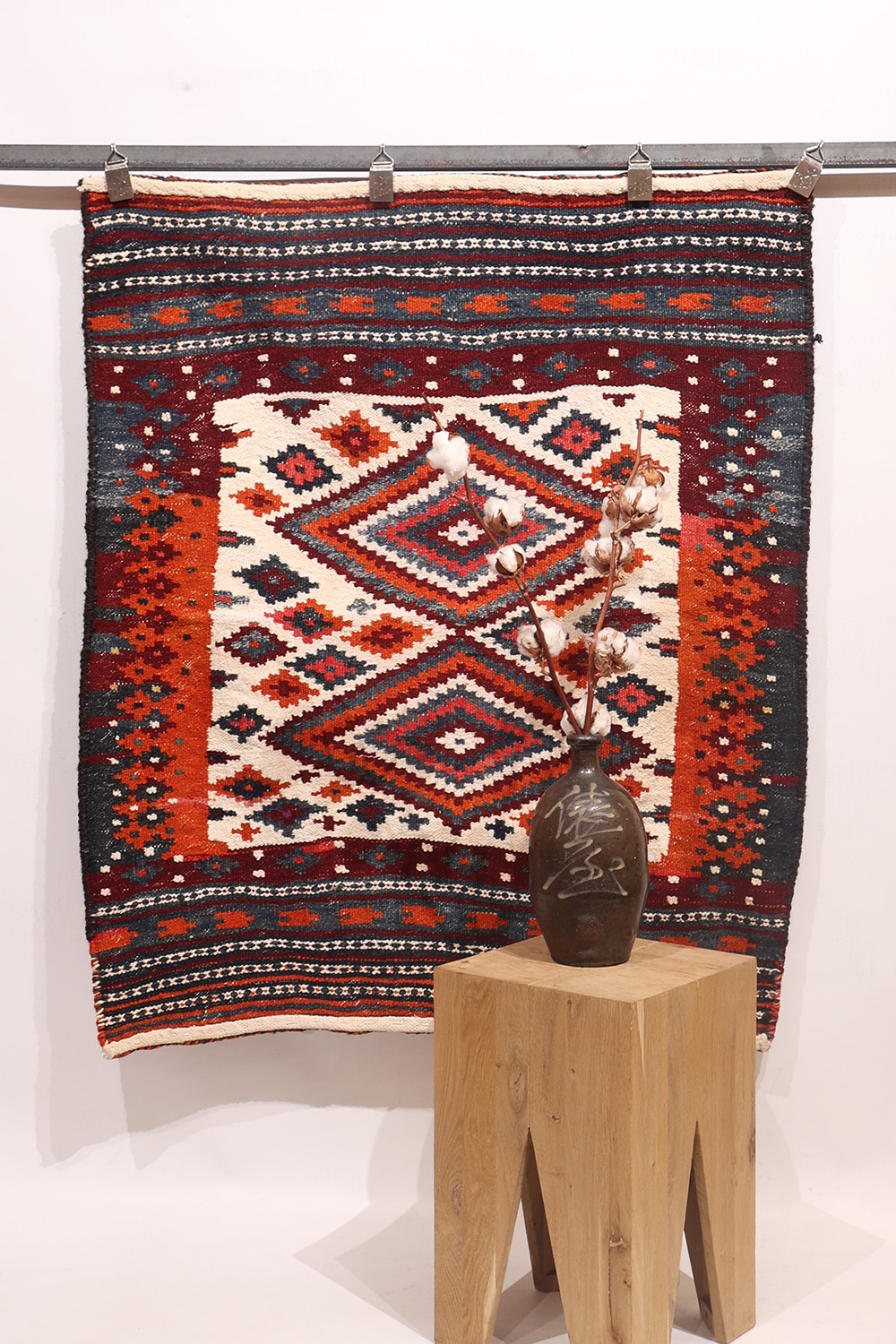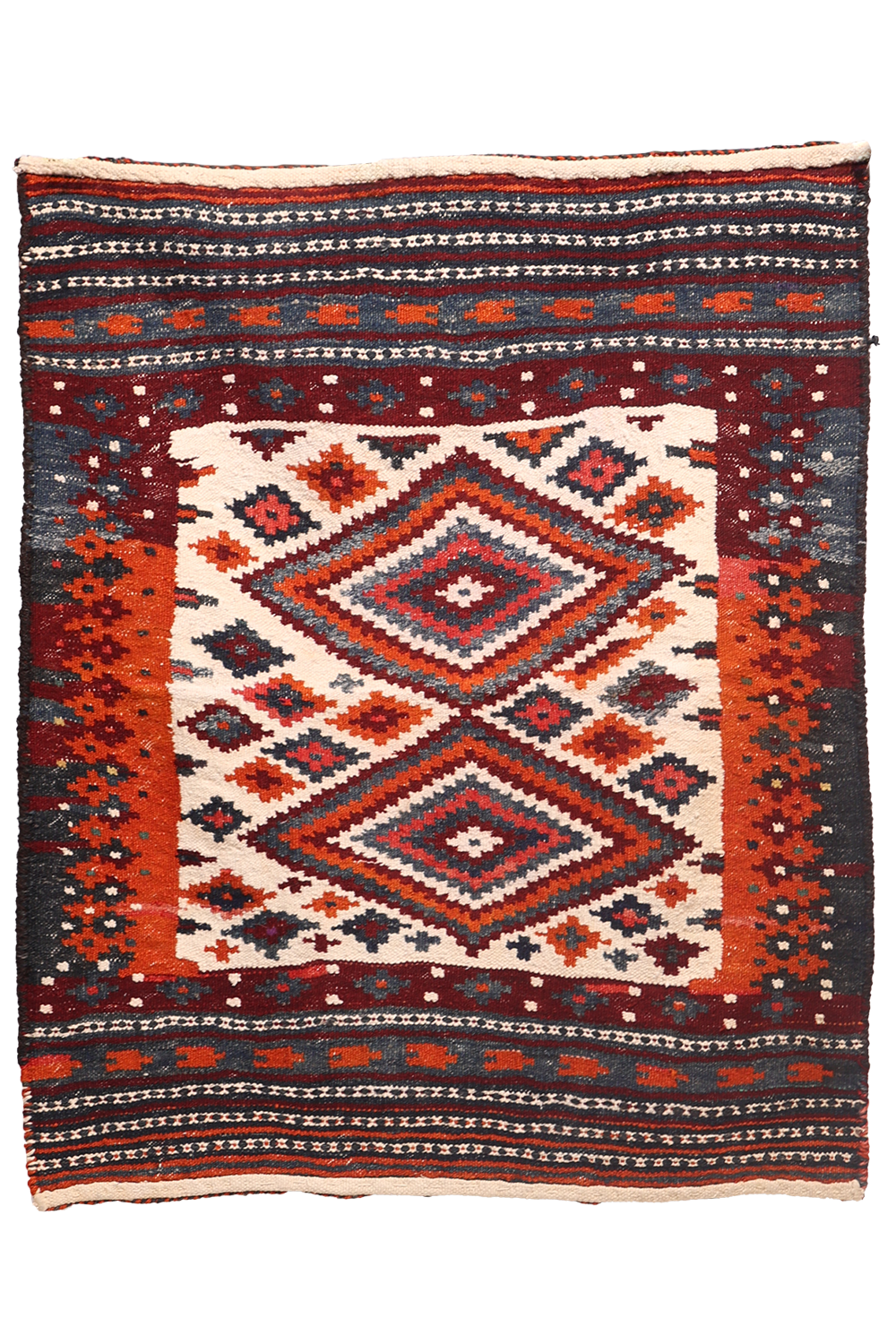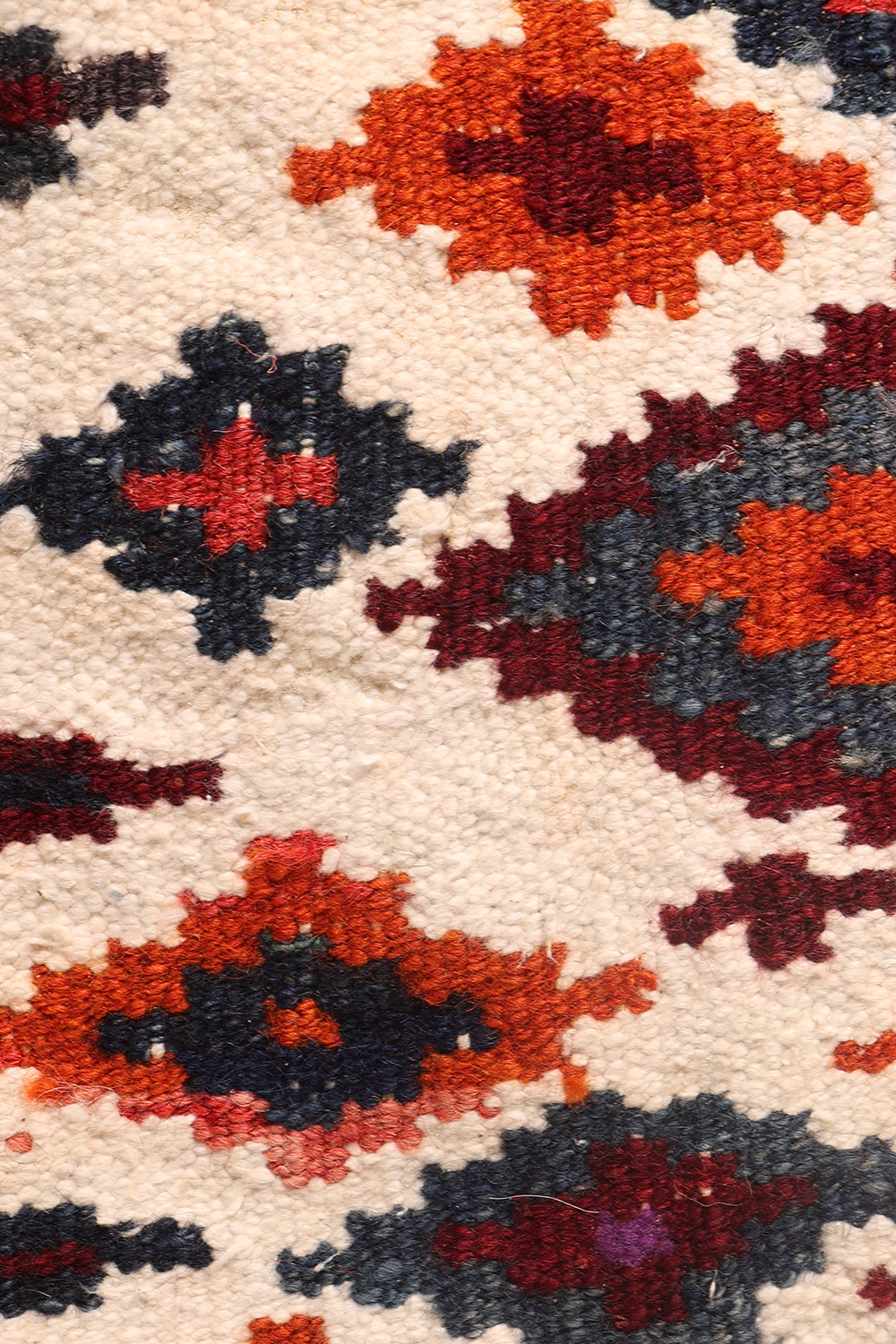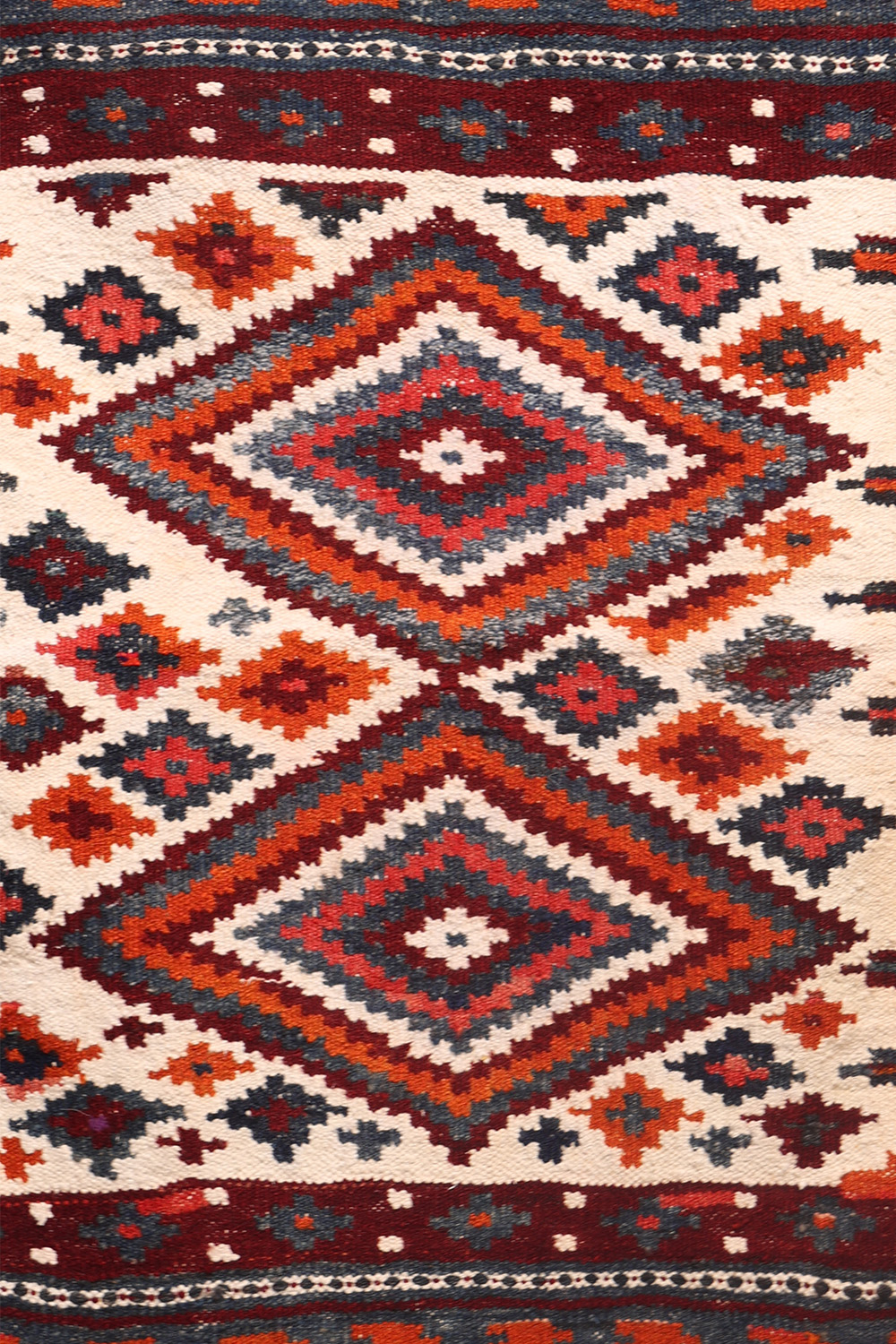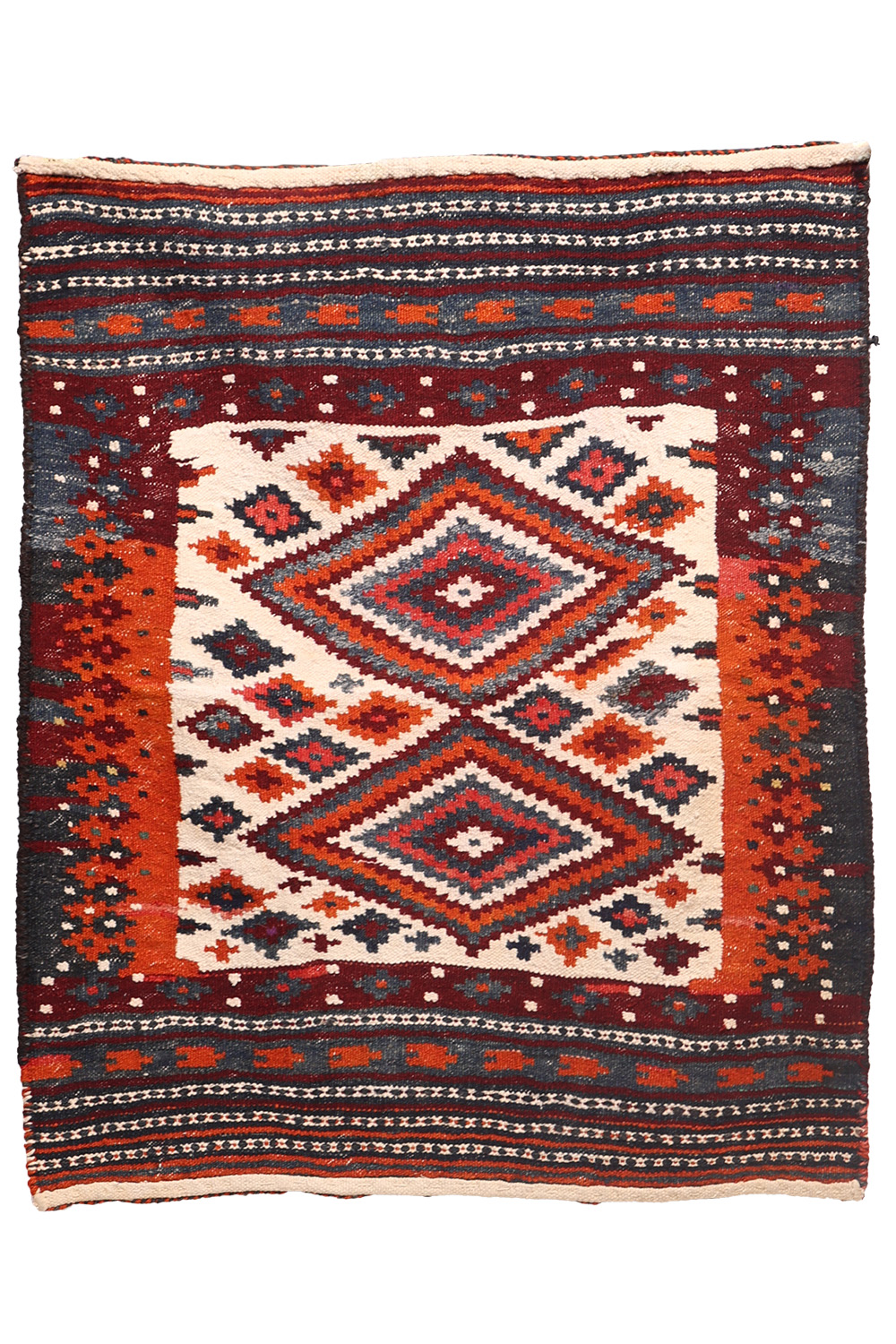An unusual 1950s Bakhtiari sofreh with a creative field composed of randomly distributed small lozenges. The border, at first sight, appears to be more geometric, but on closer inspection, we find that the weaver has made a creative use of the colour, mixing again randomly the terracotta, the blue and the maroon!
All the dyes are natural.
Material: 100% hand-spun sheep wool and cotton (white areas)
Size: 112×95 cms
Origin: Bakhtiari tribe, Iran
Date of weaving: 1950s
Sofrehs take their name from the Farsi (Persian) word for cloth and are used for several functions connected with preparing and eating food. Eating cloths are normally referred to simply as sofrehs and vary enormously in size-from small, rectangular mats for personal use to extremelly long, narrow runners for communal eating. They are woven in several standard techniques, including alternating bands of kilim and pile rug, and produced by a number of nomadic and tribal weavers in Iran, Afghanistan, Central Asia and to a lesser degree, elsewhere.
The Bakhtiari (also spelled Bakhtiyari; Persian: بختیاری) are a Lur tribe from Iran. They speak the Bakhtiari dialect of the Luri language.
Bakhtiaris primarily inhabit Chaharmahal and Bakhtiari and eastern Khuzestan, Lorestan, Bushehr, and Isfahan provinces.
A small percentage of Bakhtiari are still nomadic pastoralists, migrating between summer quarters and winter quarters. Numerical estimates of their total population vary widely.
Due to their luck of escaping danger throughout their history, they called themselves bakhtiyar (“fortunate”).
1 in stock
| Weight | 2.9 kg |
|---|
